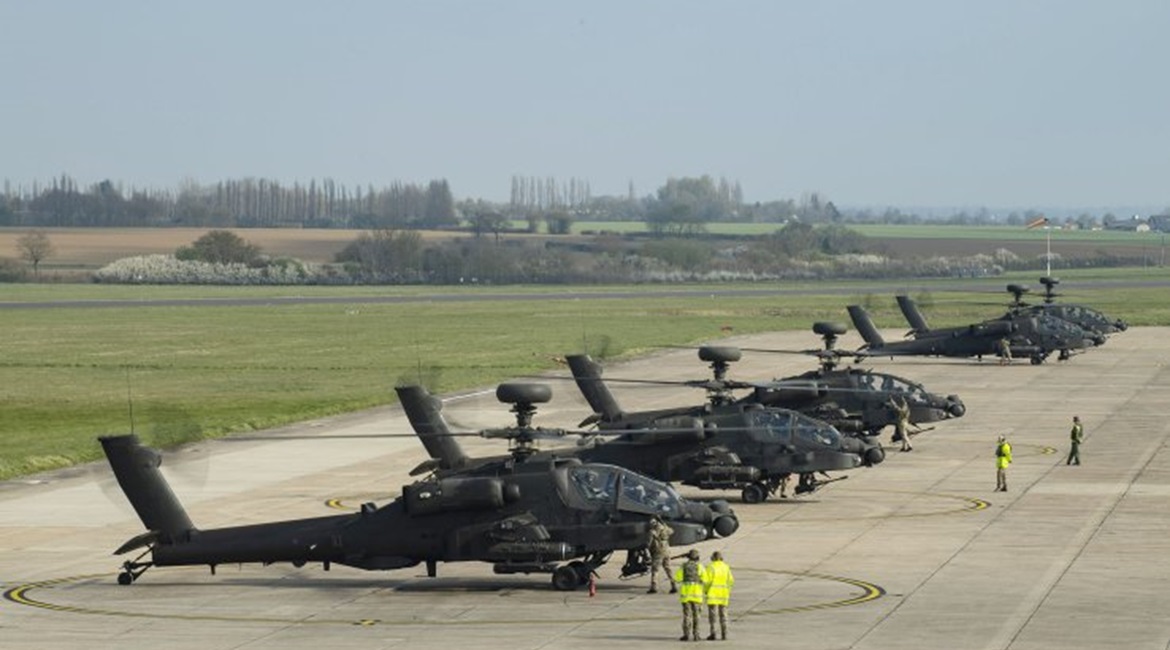
The United Kingdom has deployed AgustaWestland-Boeing WAH-64 Apache AH1 and AgustaWestland AW159 Lynx Wildcat AH1 helicopters to Estonia in support of NATO’s Enhanced Forward Presence (eFP).

The five Apaches at their home base in Wattisham shortly before departing for Estonia. They are joined in their deployment by four Lynx Wildcats. (Crown Copyright)
Five British Army Air Corps (AAC) Apaches from 663 Squadron departed their home base at Wattisham in Suffolk on 15 April, two days after four AAC Wildcats from 661 Sqn departed Royal Naval Air Station (RNAS) Yeovilton in Somerset.
The nine helicopters will be based at Ämari airbase in Estonia for three months. The UK Ministry of Defence (MoD) said they will train alongside NATO allies and be in position to deter potential adversaries. “Their main task is to support the allied combat group serving at Tapa military base [in eastern Estonia]. The helicopters will take part in Estonia’s annual Spring Storm exercises,” the MoD said.
The aircraft will reinforce the UK-led, Estonia-based NATO Battle Group, which, as part of NATO’s eFP in northeast Europe, is titled Operation ‘CABRIT’. The battle group now numbers more than 1,000 personnel, mostly from the UK’s King’s Royal Hussars armoured regiment, accompanied by a company of Belgium's Chasseurs Ardennais mechanised light infantry.
The Wildcat’s surveillance abilities combined with the Apache’s sensors and weaponry will increase the formation’s capabilities to detect, track, and engage targets. The deployment was first announced by UK Defence Secretary Gavin Williamson at the NATO Defence Ministers’ meeting in Brussels on 13 February.
Looking to read the full article?
Gain unlimited access to Janes news and more...




